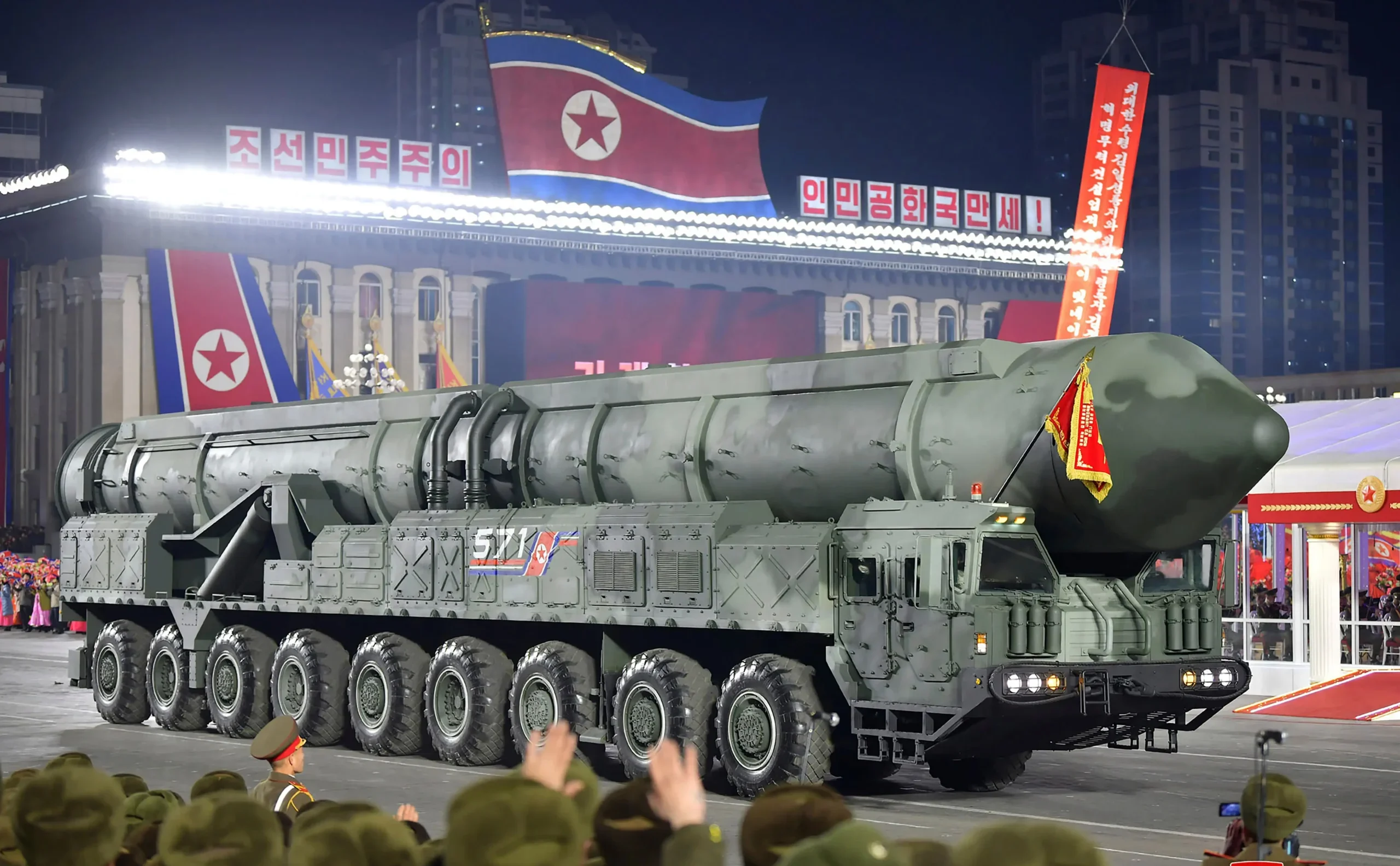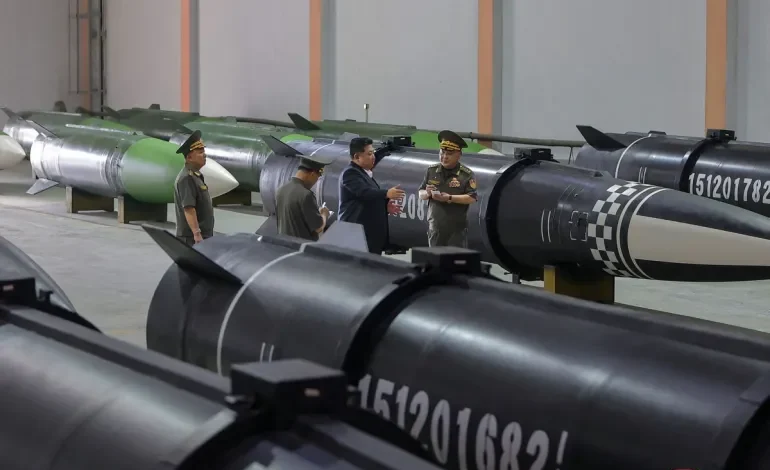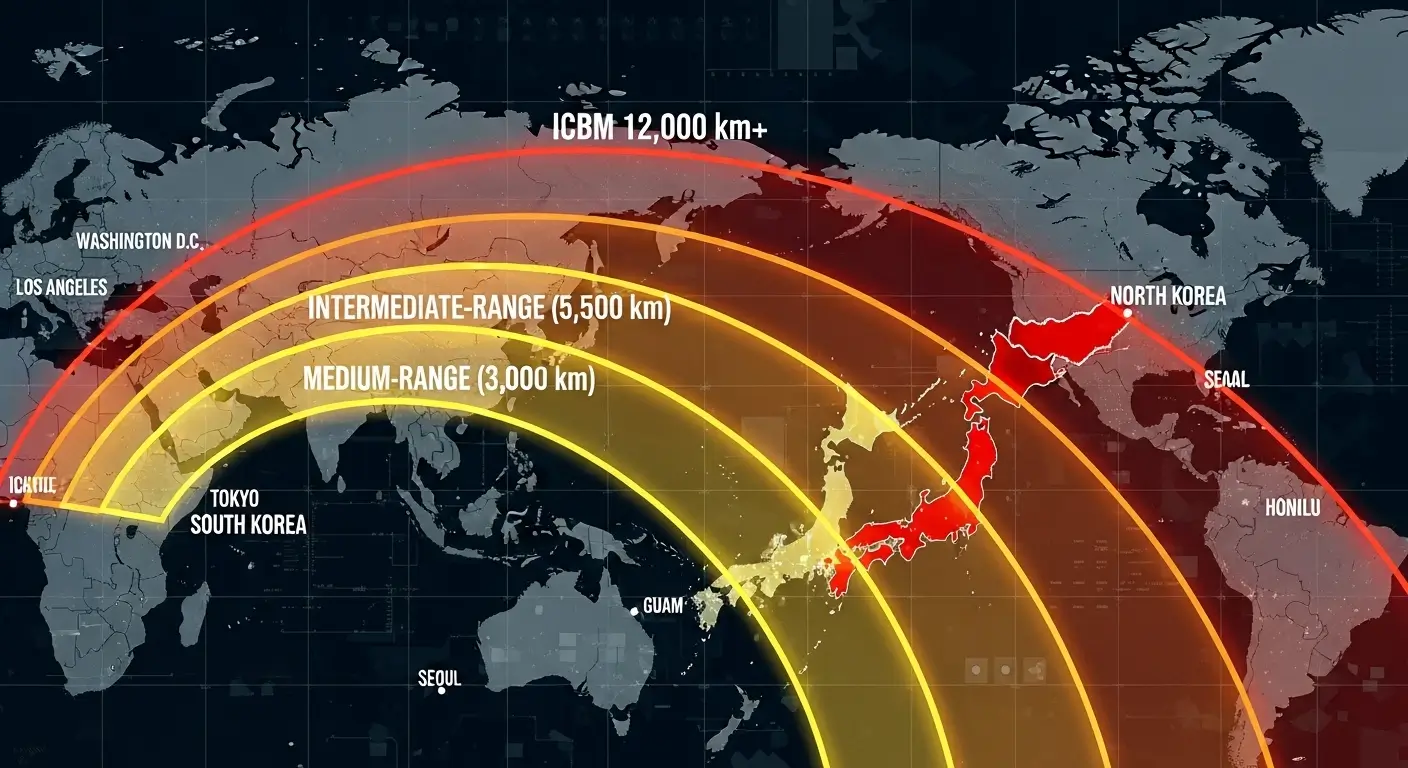A New Era: Missile That Changes the Game
Imagine thousands of soldiers marching perfectly in step under the bright lights of Pyongyang, with the air thick with excitement. This was not just any event—it was the 80th anniversary of North Korea's ruling Workers' Party, and the star of the night was something from a high-stakes movie. Leader Kim Jong Un watched proudly as the curtain was pulled back on the Hwasong-20, the country's newest long-range missile. Called the "most powerful" in their collection, this massive weapon rolled out on a huge 11-axle truck, making the world watch and wonder.

According to the official Korean Central News Agency (KCNA), this isn't just a piece of military hardware—it's a powerful statement. An AFP report noted the parade showcased North Korea's latest military toys: long-range cruise missiles, drones, and the towering Hwasong-20 stealing the spotlight. It's the kind of show that reminds everyone that Pyongyang is a serious player on the world stage. Even though it was raining, tens of thousands of people marched in the parade, and fireworks lit up the sky. The whole event felt like Kim Jong Un saying, "We are here, and we are strong."
Summary
North Korea showed off its new Hwasong-20 long-range missile at a massive parade, calling it their top nuclear weapon. Experts warn it could carry several warheads, making global tensions higher. Kim Jong Un encouraged his nation to stand against outside threats, while a top Russian official, Dmitry Medvedev, confirmed their strong friendship.
At the Victory Parade: A Show of Strength and Spirit
Streets of Pyongyang were filled with the sound of heavy machines and the marching of boots. It was more than a celebration; it was a powerful display of national pride for the Workers' Party anniversary. As reported by CNN, the event was carefully planned to send a message of unity and power. Kim Jong Un led the event, and his presence alone made the crowd cheer loudly.
At the center of the parade, among rows of troops and tanks, the Hwasong-20 appeared like a king. The state news agency called it the high point of their nuclear plans—a weapon meant to keep enemies away. Al Jazeera's coverage highlighted that the parade, which started late Friday, was a mix of military power and chants of loyalty to the party.
Road to the Reveal
This missile didn't just appear out of nowhere. News started spreading weeks ago when North Korea tested a new solid-fuel rocket engine. This new engine is stronger and more efficient, making it a big step up from their older technology. It means they can launch missiles faster, making them harder for other countries to track and stop.
These parades are more than just for show. They have been North Korea's way of showing its strength since the Korean War, reminding the world that being isolated has not made them weaker. This parade, however, felt more direct, a clear response to global pressures like sanctions and failed talks. As seen in AFP photos, the missile's huge size, which made other vehicles look small, hinted at its powerful abilities.
What Makes the Hwasong-20 Special?
Power Under the Hood
Hwasong-20 is built for long-distance strikes. Missiles like this can travel across continents to deliver their payload. While older Hwasong models could already reach the U.S., this one is a big improvement. The new engine means it can be launched more quickly and is harder to spot and stop.
Of course, questions remain. Can its guidance system hit a target from halfway around the world? Can the warhead survive returning to Earth? These are the puzzles experts are trying to solve. But one thing is clear: the missile's size shows big ambitions. This isn't a toy; it's a tool meant as a serious warning.
Multiple Warheads: A Game-Changer?
Here’s where it gets really serious. Many experts believe the Hwasong-20 can carry multiple warheads. This technology, known as MIRV, allows one missile to split into several smaller ones in flight, each aimed at a different target. Al Jazeera quoted analysts who said the missile's large size strongly suggests it can do this. If true, this makes it much harder for missile defense systems to stop an attack.

To put it simply, it's like one arrow suddenly turning into a flock of arrows. This is the advantage North Korea is looking for, making its threats not just loud, but also complex and difficult to counter. A CNN military analyst explained, "A successful MIRV capability would fundamentally change the security situation in the region, forcing the U.S. and its allies to completely rethink their defense strategies."
Missile Evolution
Hwasong-20 is not just a single achievement but the culmination of decades of development. To understand its significance, it's helpful to see how it stacks up against its predecessors. The graph below illustrates the estimated operational ranges of North Korea's key ballistic missiles, showing a clear and steady progression toward intercontinental capability.

As the chart demonstrates, each new generation of the Hwasong series represents a significant leap in technology. While the Hwasong-12 could reach U.S. bases in Guam, the Hwasong-15 and Hwasong-17 brought the entire U.S. mainland within theoretical range. The Hwasong-20, with its potential MIRV capability and solid-fuel engine, aims to make that threat more credible and harder to defend against.
What the Experts Are Saying
This news didn't happen in a bubble. Ankit Panda, a top expert at the Carnegie Endowment for International Peace, said it clearly: "The Hwasong-20 is the high point of North Korea's long-range missile dreams right now. I would expect a test flight before the end of the year." He's not the only one who is worried.
Panda also explained that multiple warheads aren't just for show—they are a major test for U.S. defenses. "It increases the pressure and gives Kim the power he needs to stand off against Washington." Other experts agree, pointing out how this kind of technology can speed up an arms race. According to a security correspondent for AFP, "Every advancement by Pyongyang triggers a new round of defense spending and planning in Seoul, Tokyo, and Washington."
Looking at the Past
Just ten years ago, North Korea was testing missiles that could barely cross the Sea of Japan. Now, they are showing off giants like the Hwasong-20. It's a story of focus and creativity while under heavy sanctions, driven by a belief that military strength is key to survival. The sanctions hurt, but their determination is strong. CNN reported that an earlier engine test in September set the stage for this reveal, with Kim calling it a "very important event."
Kim's Strong Words: A Nation Unbroken
After the missiles rolled by, Kim took the stage. In his speech, broadcast live on state TV, he described North Korea as an unbreakable shield against the West. "We stand as a mighty people," he declared, "for whom no walls are too high and no victories are out of reach." It was classic Kim—partly inspiring for his people and partly a warning to others.
He called his country a "faithful socialist force" and a "protector of independence." In a world of changing friendships, this was a reminder that Pyongyang sees itself as a tough underdog. The crowd loved it, chanting in waves that echoed through the capital. Al Jazeera captured the moment, with Kim's powerful voice booming over the parade grounds.
Closer Friendship with Russia
A High-Profile Guest
Adding an international touch to the event was Dmitry Medvedev, a top official in Russia's Security Council and a close ally of President Putin. He flew to Pyongyang for the event, and the friendly connection was clear. During their talks, Medvedev thanked North Korea for supporting Russia's actions in Ukraine with supplies like artillery shells.
"The ties between our nations shine brightest in tough times," Medvedev posted on social media. Kim responded with promises of deeper friendship, from sharing technology to holding joint military exercises. This partnership seems to be warming up, one deal at a time.
Why This Matters Now
With the war in Ukraine continuing and sanctions affecting both countries, Russia and North Korea are a natural fit. North Korea gets access to expertise and markets, while Russia gets military supplies and support. We can expect to see more cooperation, which could change the balance of power in Asia.
Economic Cost of Ambition
While the Hwasong-20 is a symbol of military pride, it also represents a massive economic investment in a country facing chronic food shortages and crippling international sanctions. Developing, testing, and producing such sophisticated weaponry requires billions of dollars and vast resources diverted from civilian needs. Observers often question how the regime sustains this spending.
The answer lies in a complex and often illicit network of state-run enterprises, cybercrime, and arms sales that bypass sanctions. However, the internal cost is high. Defector testimonies frequently describe a stark contrast between the glittering parades in Pyongyang and the daily struggles of ordinary citizens in rural areas. This "military-first" policy ensures the survival of the regime and its defense capabilities, but at the direct expense of public welfare and economic development.
How This Affects the World
News like this has an impact far beyond Pyongyang. South Korea is on high alert, running military drills and considering its own defense upgrades. Japan is again debating whether to strengthen its missile shields. And the U.S. is rethinking its plans, from using diplomacy to increasing its military presence in the Pacific.
The reactions are spreading. China, North Korea's most important ally, has remained quiet but is watching closely—too much instability could draw them in. Meanwhile, people from Seoul to Seattle are wondering if this brings the world closer to a conflict. The situation is tense, and as BBC analysts predict, watchfulness across the region will increase.
How World Leaders Are Reacting
The parade may be over, but the reactions are just beginning. South Korea's President called the display a "provocation" and promised to strengthen alliances with the U.S. and Japan. In Tokyo, the Prime Minister called the Hwasong-20 a "grave threat" to peace in the region. The White House urged North Korea to return to talks, but insiders expect more sanctions soon.
United Nations Security Council has scheduled an emergency meeting. In Europe, France's foreign minister called it an "unacceptable build-up," while Germany pushed for diplomacy instead of conflict. An analysis from Al Jazeera pointed out that while Western nations condemned the move, some other countries have remained silent, showing a divided global response to North Korea's actions.
What's Next for North Korea?
Experts like Ankit Panda expect a test launch soon—perhaps before winter. If the test is successful, it will make headlines and create headaches for world leaders. Kim's goal seems to be a fleet of these missiles, protected from attack and ready to back up his policies. However, he faces challenges like technology problems, a lack of money, and international pressure.
In the long run, this could start a new arms race in the region. North Korea's neighbors may build up their own weapons, and diplomatic talks could become more difficult. Yet, sometimes, big shows of force like this can lead to new talks. After all, history is full of surprises. For now, the world is watching and waiting to see what happens next.
Read Our Post on Starship
We break down big global events so you don't have to. For more on space technology, check out our deep dive on SpaceX's plans for 2025.
Read NowShare this story and let us know your take on North Korea's latest move in the comments below!



